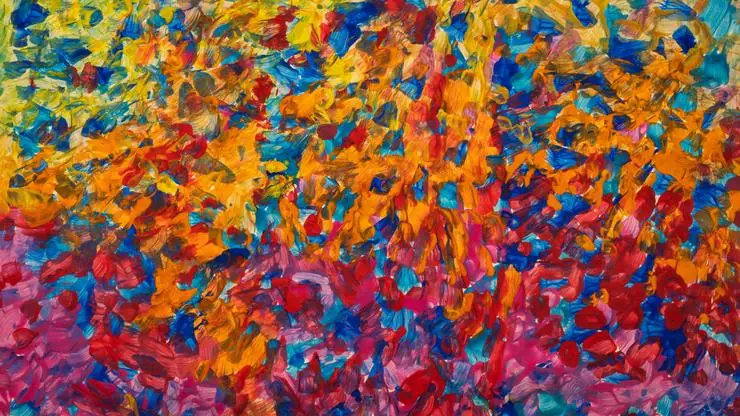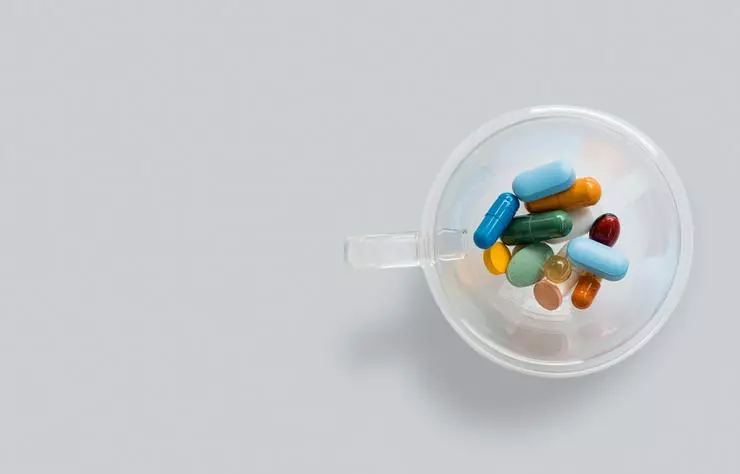Stay in warmer colors, whether it is a sunny day in the backyard or a room painted in bright shades, makes people feel a little better. Womanhit transferred the English-language material of the Healthline website, in which the effects of color therapy are considered on the basis of research.
What is color therapy?
Color therapy, also known as chromotherapy, is based on the idea that color and color light can help in the treatment of physical or mental health. According to this idea, they cause subtle changes in our mood and biology. Color therapy has a long history. Entries indicate that once in ancient Egypt, Greece, China and India practiced color and light therapy. "Our relationship with the color developed together with our cultures, religions and lives," says Valaa Al Muhajtib's color therapy expert in HealthLine material. "The color as a manifestation of light had a divine status for many. Egyptian healers wore blue breaststs as a sign of their holiness. In Greece, Athena wore golden clothes, symbolizing her wisdom and holiness. "
Today, color therapy is mainly considered as additional or alternative medicine. Some spa offers saunas with chromotherapy and argue that they benefit their customers. Guests of the sauna can choose blue light if they want to relax or feel calm. They can choose pink light if they want to get rid of toxins. Al Mukhautyib says that uses color therapy to help its customers get rid of concern, facilitate depression and better communicate with itself with the help of color seminars, exercises for color breathing, meditations and individual exercises.

Try color therapy as an experiment
Photo: unsplash.com.
Color therapy science
In truth, scientifically based color therapy studies are still quite limited. This is a completely new area of research, at least in the world of medicine. Many researchers told me that they were confronted with resistance when they tried to get financing for research using color therapy. "When I proposed the light as a therapeutic approach, I ran into a great resistance," says Mojab Ibrahim, Doctor of Medical Sciences, Associate Professor of Anesthesiology Medical College of the University of Arizona in Tucson. Nevertheless, Ibrahim is devoted to his work. "Colors have a certain biological and psychological impact on people, and I think it's time to start using this," he says.
At the moment, medical science cannot confirm whether color or color will treat your physical ailments or improve your mental health. However, there are some evidence confirming the idea that color light can affect our bodies, the level of pain and our mood. For example, light therapy is used to treat a seasonal affective disorder, such as depression, which usually occurs in the fall and winter. Phototherapy in blue light is commonly used in hospitals for the treatment of jaundice newborns, states affecting infants. The condition causes a high level of bilirubin in the blood, which is why the skin and eyes become yellow. During the treatment of babies, it is placed under blue halogen or luminescent lamps while they sleep so that their skin and blood can absorb light waves. These light waves help them eliminate bilirubin from their systems. In addition, one overseas study suggests that during the day blue light can improve:
vigilance
Attention
reaction time
General mood
However, at night, blue light may harm us, breaking our biological clocks or circadian rhythms. This is because he suppresses melatonin, a hormone that helps our body to sleep. There are also some evidence that monitoring blue light can increase the risk of cancer, a reliable source of diabetes, heart disease and obesity, although this is not confirmed.
Green light and pain research
Ibrahim studied the effect of green light on migraine and pain during fibromyalgia. He began this study when his brother suffering from frequent headaches, said that he felt better after spent time in his garden with trees and another greens. Although Ibragim's study has not yet been published, he argues that its results are very encouraging. According to him, the participants report less than migraine per month and less severe pain in fibromyalgia after 10 weeks of the daily effects of green LED light. "So far, many people have reported on the benefits of green light, and no one has reported on any side effects," he says. "I doubt that therapy will replace the usual painkillers with green, but if we can reduce the number of painkillers even by 10 percent, it will be a great achievement," he says. "It may have serious consequences for future anesthesia."

Do not replace alternative methods to a doctor
Photo: unsplash.com.
Meanwhile, Padma Gulur, Doctor of Medicine, Professor of Anesthesiology and Health of the Public School of the University of Duke, studies the effect of glasses with color filtration to the level of pain. Its first results show that green waves reduce sharp and chronic pain. Taking into account the opioid epidemic and the side effects of many painkillers, Gulour says that there is an urgent need for non-drug to facilitate pain. "We are still in the early stages ... But [Green Light] can mean a fairly safe and effective alternative to medicines that helps patients get rid of pain," she explains.
Color therapy with their own hands
Although the study is still going on, there is nothing wrong with the use of color in small quantities to improve your mood or improve sleep.
Protect your rhythm. So that the blue light of your phone or computer does not interfere with your circadian rhythm, turn them off several hours before sleep. There is a software that can help: it changes the color of the light of your computer depending on the time of day, creating warm colors at night and the color of sunlight during the day. You can also try glasses with protection from blue light that protect against light emitted by your computer, smartphone, tablet and TV screens. Be sure to learn them before purchasing to make sure that the points you have chosen really block the blue light.
Night light. If you need a night light, use dull red light. According to research, the red light can affect the circadian rhythm less than blue light.
Breaks in the fresh air. If you have problems with focusing or attention, go out to the street, where you will have a lot of natural blue light. Interaction with green plants can also be natural way to remove stress.
Decorate with flowers. You can also do the same as me, and use the color in your home to raise my mood. In the end, interior designers recommended this for years. "In the world of colors for interiors, color therapy is simply used by choosing the color of the walls, which is suitable for you, creating the mood you want to achieve in space," says Sue Kim, color marketing manager. "The colors that you bring to you calm and balance are perfectly suitable for bathrooms and bedrooms, typical spaces used for rest," Kim says. "Bright, invigorating shades are included in the kitchen and dining room, in bright spaces that are used to communicate."
Experiment. There is also nothing wrong with visiting spas or acquiring fun LED lighting for home. Even painting nails or hair coloring can be a variety of color therapy.
Precautions
Ibrahim immediately emphasizes that his study is still preliminary. He fears that people can use the green light for the treatment of headaches before consulting a doctor. Although he did not notice any side effects, he still had many studies. If you have problems with eyes, he will advise you to consult with an ophthalmologist. Ibrahim also warns that if strong migraines or headaches that you have not had before will suddenly begin, you should consult a doctor to eliminate any related diseases.
